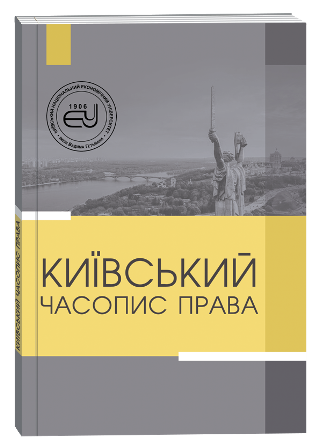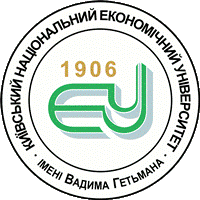ADMINISTRATIVE AND LEGAL REGULATION OF OBTAINING TEMPORARY PROTECTION FOR PERSONS FROM UKRAINE WHO CANNOT RETURN TO THE COUNTRY AND WERE FORCED TO LEAVE DUE TO THE ARMED CONFLICT WITH THE AGGRESSOR COUNTRY IN THE REPUBLIC OF MONTENEGRO
DOI:
https://doi.org/10.32782/klj/2022.1.20Keywords:
armed conflict, aggressor country, forced displacement, temporary protection, refugeeAbstract
Abstract. This scientific article considers the peculiarities of administrative and legal regulation of obtaining temporary protection for persons from Ukraine who cannot return to the country and were forced to leave due to the armed conflict with the aggressor country in the Republic of Montenegro. A distinction is made between the concepts of "refugee" and "forcibly displaced person". Emphasis is placed on the peculiarities of the legal regulation of this status. The procedure for obtaining temporary protection for persons from Ukraine who cannot return to the country and were forced to leave due to an armed conflict with the aggressor country in the Republic of Montenegro includes the following stages: I. Submission of documents. Persons from Ukraine who wish to obtain the status of temporary protection must apply to the MUP (local police department) to submit a package of documents and perform other certification actions. The package of documents includes: 1. Completion of the application from the applicant. 2. Photograph of the applicant's identity and photocopy of passport. It is emphasized that all persons over 18 years of age apply individually, parents additionally apply for children under 18 years of age. If the applicant has minor and / or minor children, such applications are filled in by one of the parents or the legal representative. The statement at the end of the signature is handwritten with an indication indicating the level of kinship (eg, mother, legal representative). A person who has received temporary protection has the right to: 1) a residence permit for the period of temporary protection (for 1 year with the possibility of extension); 2) access to work (there is no requirement to wait 6 months in contrast to obtaining refugee status in this case); 3) access to education. Children under the age of 18 have the right to study in educational institutions at the level of the citizens of the host country; 4) provision of housing (settlement in the center or provision of means of subsistence); 5) access to social security; 6) access to medical care; 7) the right to relevant information on temporary protection; 8) the opportunity to obtain refugee status in the future; 9) the opportunity to return to the country of citizenship at any time.
References
Українсько-чорногорські відносини. URL: https://uk.wikipedia.org/wiki
Council Directive 2001/55/EC of 20 July 2001 on minimum standards for giving temporary protection in the event of a mass influx of displaced persons and on measures promoting a balance of efforts between Member States in receiving such persons and bearing the consequences thereof. URL: https://eur-lex.europa.eu/legal-content/EN/TXT/?uri=celex%3A32001L0055
Тимчасовий захист як форма міжнародного захисту для громадян України в країнах Європейського Союзу. URL: https://wiki.legalaid.gov.ua/index.php
Informacija u vezi statusa lica iz ukrajine u crnoj gori s predlogom odluke o odobravanju privremene zaštite licima iz ukrajine odluku o odobravanju privremene zaštite licima iz ukrajine. URL: https://www.gov.me/dokumenta/dd772570-2f5b-4010-9abc-8874e893a004
Predlog odluke o obrazovanju Koordinacionog tijela za vršenje nadzora nad sprovođenjem Odluke o odobravanju privremene zaštite licima iz Ukrajine. URL: https://www.gov.me/dokumenta/998e851c-9b04-4b66-baff-dada30632c23
Конвенція про статус біженців. URL: http://zakon4.rada.gov.ua/laws/show/995_011
Котляр О. І. Співвідношення міжнародного права біженців та міжнародного права прав людини. Актуальні проблеми міжнародних відносин. 2014. Випуск 120 (частина І). С. 200-207
Шацкий Е. Міжнародний захист прав ВПО URL: https://khpg.org/1417117017







